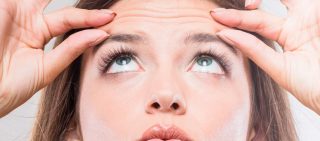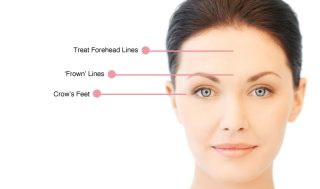Wrinkle Treatment in Islamabad
Wrinkles are creases, folds, or ridges in the skin. They naturally appear as people get older.
The first wrinkles tend to appear on a person’s face in areas where the skin naturally folds during facial expressions. They develop due to the skin becoming thinner and less elastic over time.
Wrinkles also tend to appear on parts of the body that receive the most sun exposure, such as the face and neck, back of the hands, and arms.
What causes wrinkles?
Wrinkles are a natural part of the aging process. As people get older, their skin becomes thinner, drier, and less elastic, which means it is less able to protect itself from damage. This leads to wrinkles, creases, and lines on the skin.
Facial expressions, such as smiling, frowning, or squinting, lead to the development of fine lines and wrinkles at a young age. These lines deepen as the person gets older.
When a person is young, their skin springs back. As they get older, the skin loses its flexibility, and it becomes more difficult for the skin to spring back, resulting in permanent grooves.
Wrinkles affect people of different skin tones differently due to structural and functional differences in the skin.
Many factors affect the development of wrinkles, including:
- sun exposure
- smoking
- dehydration
- some medications
- Environmental and genetic factors
Exposure to ultraviolet (UV) light from sunbathing, tanning booths, and outdoor sports increases the development of wrinkles.
UV light breaks down the collagen and elastin fibers in the skin. These fibers form the connective tissue that supports the skin. As this layer breaks down, the skin becomes weaker and less flexible. The skin starts to droop, and wrinkles appear.
Darker skin contains more melanin and protects from many harmful effects of UV radiation.
People who work in sunlight have a higher chance of early wrinkles. Wearing clothes that cover the skin, such as hats or long sleeves, may delay the development of wrinkles.
Regular smoking accelerates the aging process of the skin because it reduces the blood supply to the skin. Alcohol dehydrates the skin, and dry skin is more likely to develop wrinkles.
Treatment
There are many treatments available to help reduce fine lines on the skin. For deeper creases, a person may require more aggressive techniques, such as plastic surgery or injections of fillers.
Medications
Topical retinoids derived from vitamin A. They aim to reduce fine wrinkles, hyperpigmentation, and skin roughness. They do this by increasing collagen production in the skin.
However, using retinoids can cause the skin to burn in sunlight, so it’s essential to protect the skin while using the cream.
Possible adverse effects include:
- dryness
- itching
- a burning sensation
- tingling
- discolored areas
People may notice slight-to-modest results from the following medications:
- retinol
- alpha hydroxy acids
- kinetin
- coenzyme Q10
- copper peptides
- antioxidants
Dermabrasion
Dermabrasion is a surgical procedure that involves the controlled wearing away, or abrasion, of the upper layers of skin with a rapidly rotating device. Dermabrasion aims to remove fine wrinkles, moles, tattoos, acne scars, and other types of scars. The results are only temporary, and people may require repeated treatments.
Non-ablative lasers, radiofrequency (RF) devices, and pulsed light sources do not damage the epidermis. Laser and light source therapy treatments destroy the outer layer of the skin to decrease wrinkles.
Radiofrequency (RF) treatments heat the underlying dermis and stimulate the development of new collagen fibers. This tightens skin and decreases wrinkles. When the wound heals from laser or light surgery, the new skin is smoother and tighter. Ablative laser resurfacing can take several months to heal,
Newer therapies using laser technology may heal more quickly. A person may need several treatments before their skin feels firmer and appears refreshed, but recovery times are faster.
Botox
Botulinum toxin type A, or Botox, blocks the chemical signals that cause muscles to contract. Doctors use it to treat some medical conditions.
A cosmetic professional will use it to reduce wrinkles by injecting small doses of Botox into targeted muscles. If the muscles can no longer tighten, the skin flattens, giving a less wrinkled and smoother appearance.
Chemical peels
A chemical peel involves applying a chemical solution to the desired areas, causing the dead skin to shed and eventually peel off. The regenerated skin tends to be smoother than the old skin.
Facelift
A facelift, or a rhytidectomy, is a type of cosmetic surgery that aims to make people look more youthful. It usually involves removing some facial skin and fat, with or without tightening the underlying tissues.
Fillers
Soft tissue fillers include collagen, hyaluronic acid, or fat. A cosmetic professional will inject fillers into deeper face wrinkles, plumping and smoothing them out to give the skin more volume. The results depend on several factors, including where the wrinkles are and their depth.


